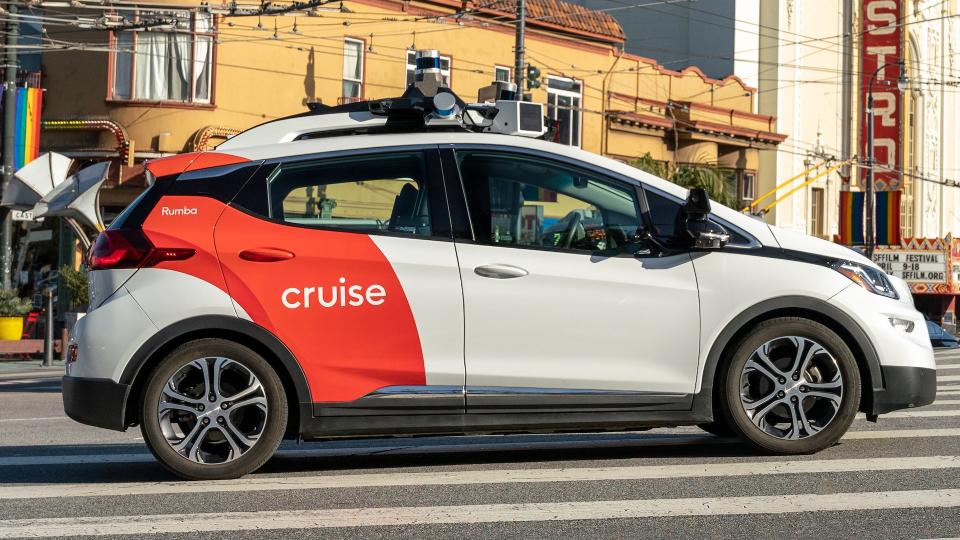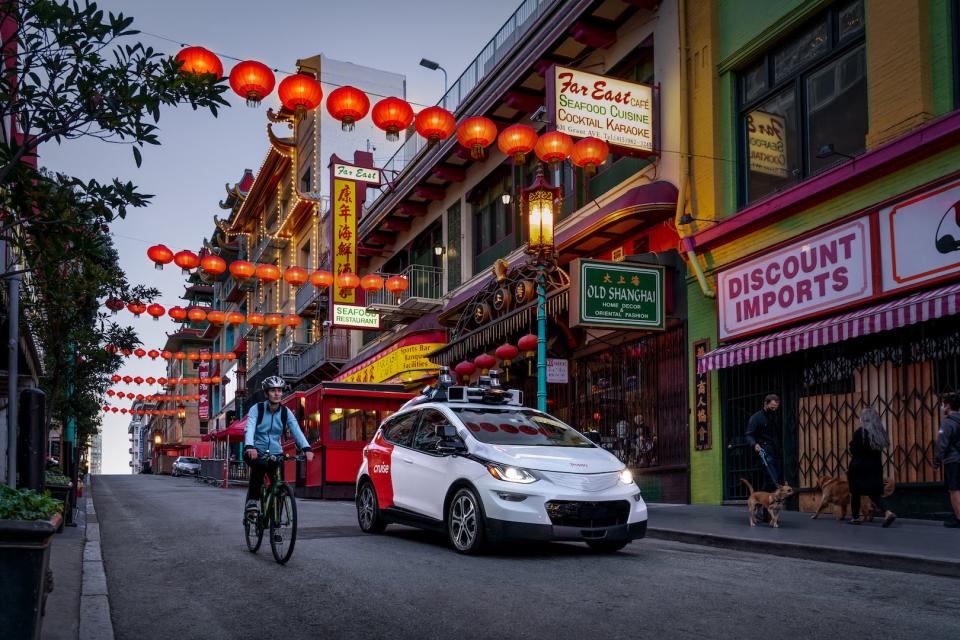California Says Cruise Lied About Robotaxi Crash Footage, Suspends Operations

General Motors' robotaxi service Cruise has been barred from testing driverless vehicles on public roads in California. The California Department of Motor Vehicles says Cruise withheld footage of one of its cars dragging away an injured pedestrian after they were knocked into its path during a hit-and-run.
The California DMV informed Cruise of its retracted approval prior to a press release issued Tuesday. Cruise was approved to operate driverless, Chevrolet Bolt-based taxis in San Francisco in June 2022, and has since expanded its test program to Seattle, WA, Washington D.C., and Austin, TX. However, test vehicles have malfunctioned and been implicated in a series of traffic blockages and collisions, some of which have caused injuries or fatalities.

"The California DMV today notified Cruise that the department is suspending Cruise’s autonomous vehicle deployment and driverless testing permits, effective immediately," the California DMV said in a release. The Department added, "the manufacturer has misrepresented any information related to safety of the autonomous technology of its vehicles," describing Cruise's AVs as "not safe for the public's operation."
The DMV declared such in response to an incident earlier this month, wherein a Cruise AV in San Francisco hit a pedestrian who was knocked into its path by another vehicle. According to an official letter sent to Cruise, the AV came to a stop after hitting the pedestrian, but then "attempted to perform a pullover maneuver while the pedestrian was underneath the vehicle." This covered an additional 20 feet at up to 7 mph, all with the pedestrian still beneath the Cruise AV.
According to the letter, Cruise did not submit the entirety of the footage when the California Highway Patrol and DMV opened their investigation on October 3. The latter half was only released after the DMV learned from another government agency that the Cruise AV continued to drive after initially stopping.
"When there is an unreasonable risk to public safety, the DMV can immediately suspend or revoke permits. There is no set time for a suspension," the DMV continued, adding that it has provided Cruise with a path back to approval. The DMV also noted that the permit revocation for AV use does not prohibit operation with a human safety driver.
https://twitter.com/Cruise/status/1716877217995894934
Cruise has faced increasing pushback in its pioneering test environment of San Francisco, where locals have sabotaged driverless test vehicles from Cruise and competitor Waymo (funded by Google owner Alphabet). Cruise AVs have famously blocked traffic by freezing up in situations they don't have a programmed response for, which has also occurred in Austin. Cruise AVs have also blocked emergency vehicles, leading in one case reported by SFGate to two stationary Cruise vehicles for delaying treatment of a pedestrian hit by a car, resulting in their death. The driverless Cruises have also collided with a bus and killed a dog in June (Waymo is guilty of the same).
Enforcement against Cruise raises questions about the fate of competing driving automation programs, such as that of Waymo, as well as less-capable assists such as Tesla's Full Self-Driving. Tesla specifically faces a court case regarding the performance of its Autopilot system, which is expected to be sent to a jury Tuesday according to Reuters.
Update: Oct. 24, 5:20 p.m. ET: This article has been updated to reflect new information disclosed in a California DMV letter to Cruise.
Got a tip or question for the author? You can reach them here: james@thedrive.com

 Yahoo Autos
Yahoo Autos 